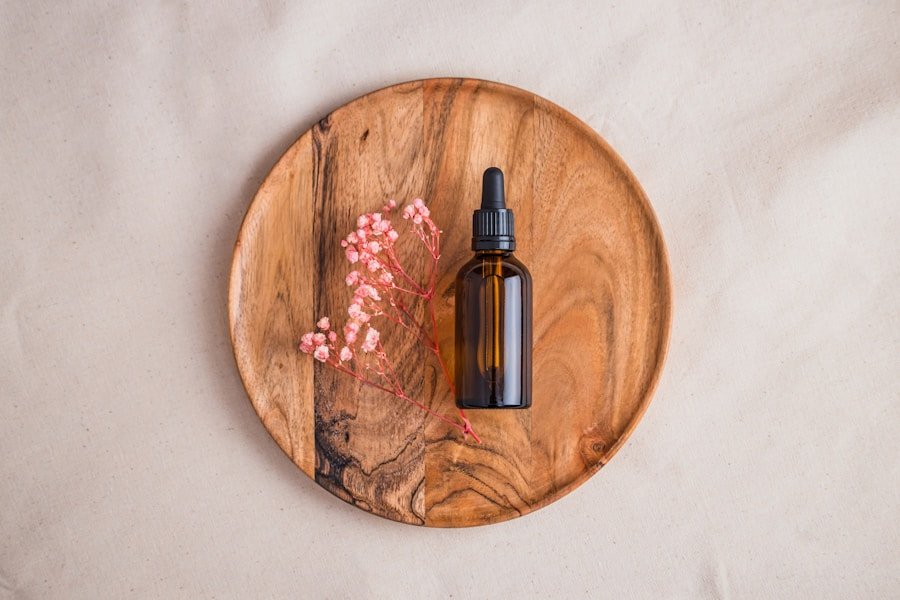Diaper rash is a common condition that affects many babies and toddlers. It is characterized by red, irritated skin in the diaper area, and can be caused by a variety of factors. The most common cause of diaper rash is prolonged exposure to wetness and irritants such as urine and feces. When a baby’s skin is in contact with these substances for an extended period of time, it can become irritated and inflamed, leading to diaper rash. Other causes of diaper rash include friction from the diaper rubbing against the skin, sensitivity to certain ingredients in diapers or wipes, and yeast or bacterial infections.
The symptoms of diaper rash can vary depending on the severity of the condition. Mild cases of diaper rash may present as redness and slight irritation, while more severe cases can result in raised, bumpy skin, and even open sores. In some cases, the rash may also spread to other areas of the body, such as the thighs or abdomen. It is important for parents to be aware of the symptoms of diaper rash so that they can take appropriate action to treat and prevent it.
Key Takeaways
- Diaper rash is a common condition that causes redness and irritation on a baby’s skin, often due to prolonged exposure to wetness and friction from diapers.
- Look for diaper rash creams with ingredients like zinc oxide, petroleum jelly, or lanolin to create a protective barrier on the skin and soothe irritation.
- Proper application of diaper rash cream involves gently cleaning and drying the affected area before applying a thick layer of cream at each diaper change.
- To prevent diaper rash, change diapers frequently, allow the skin to air dry, and use gentle wipes and diapers without harsh chemicals or fragrances.
- Natural remedies like coconut oil, oatmeal baths, and aloe vera can provide relief for diaper rash, but it’s important to consult a doctor if the rash persists or worsens.
Choosing the Right Diaper Rash Cream: Ingredients to Look For
When it comes to choosing a diaper rash cream, there are a few key ingredients to look for that can help soothe and protect your baby’s skin. One of the most important ingredients to look for in a diaper rash cream is zinc oxide. This powerful ingredient forms a protective barrier on the skin, helping to prevent further irritation and allowing the skin to heal. Another beneficial ingredient to look for is petroleum jelly, which helps to moisturize and protect the skin. Additionally, creams that contain aloe vera or calendula can help to soothe and calm irritated skin.
It is also important to consider the texture of the diaper rash cream when choosing a product for your baby. Creams that are thick and creamy are often more effective at forming a protective barrier on the skin, while thinner lotions may not provide as much protection. Some parents also prefer to use fragrance-free diaper rash creams, as fragrances can sometimes irritate sensitive skin. Ultimately, the best diaper rash cream for your baby will depend on their individual needs and sensitivities.
How to Apply Diaper Rash Cream: Tips for Proper Application
Proper application of diaper rash cream is essential for treating and preventing diaper rash. When applying diaper rash cream, it is important to start with clean, dry skin. Gently clean the diaper area with mild soap and water, or use fragrance-free baby wipes if your baby has sensitive skin. Once the skin is clean and dry, apply a thick layer of diaper rash cream to the affected area. Be sure to cover all areas of redness and irritation, and pay special attention to any folds or creases in the skin where moisture can become trapped.
It is also important to apply diaper rash cream at every diaper change, even if your baby does not currently have a rash. This can help to prevent future irritation and keep your baby’s skin healthy. If your baby has a particularly severe or persistent rash, you may also want to consider using a barrier cream in addition to a regular diaper rash cream. Barrier creams are designed to provide extra protection for the skin and can be especially helpful for babies who are prone to diaper rash.
Preventing Diaper Rash: Best Practices for Keeping Baby’s Skin Healthy
| Diaper Rash Cream 101 | Information |
|---|---|
| Causes of Diaper Rash | Friction, wetness, irritants, infrequent diaper changes |
| Symptoms | Redness, inflammation, discomfort, peeling skin |
| Prevention | Frequent diaper changes, gentle cleaning, air exposure |
| Treatment | Use of diaper rash cream, keeping the area dry and clean |
| Types of Diaper Rash Cream | Zinc oxide-based, petroleum-based, natural ingredients |
While treating diaper rash is important, preventing it in the first place is even better. There are several best practices that parents can follow to help keep their baby’s skin healthy and reduce the risk of diaper rash. One of the most important things you can do to prevent diaper rash is to change your baby’s diaper frequently. This helps to reduce the amount of time that your baby’s skin is in contact with urine and feces, which can help prevent irritation.
Another key factor in preventing diaper rash is keeping your baby’s skin clean and dry. After each diaper change, be sure to gently pat your baby’s skin dry with a soft towel before applying a fresh diaper. You may also want to consider giving your baby some diaper-free time each day to allow their skin to breathe and reduce moisture buildup. Additionally, choosing the right diapers and wipes can also help prevent diaper rash. Look for diapers that are free from harsh chemicals and fragrances, and opt for gentle, fragrance-free wipes.
Natural Remedies for Diaper Rash: Alternatives to Traditional Creams
In addition to traditional diaper rash creams, there are also several natural remedies that can help soothe and heal your baby’s irritated skin. One popular natural remedy for diaper rash is coconut oil. Coconut oil has natural antibacterial and antifungal properties, making it an effective treatment for yeast or bacterial infections that can cause diaper rash. Simply apply a thin layer of coconut oil to the affected area at each diaper change to help soothe and protect your baby’s skin.
Another natural remedy for diaper rash is oatmeal. Oatmeal has anti-inflammatory properties that can help reduce redness and irritation, making it an excellent choice for treating mild cases of diaper rash. To use oatmeal as a natural remedy for diaper rash, simply add a few tablespoons of finely ground oatmeal to your baby’s bath water and allow them to soak for 10-15 minutes. This can help soothe their irritated skin and provide relief from discomfort.
When to See a Doctor: Signs that Diaper Rash Requires Medical Attention
While most cases of diaper rash can be effectively treated at home with over-the-counter creams and natural remedies, there are some situations where it may be necessary to seek medical attention. If your baby’s diaper rash does not improve within a few days of treatment, or if it appears to be getting worse, it may be time to consult a doctor. Additionally, if your baby develops a fever or seems unusually irritable or uncomfortable, it is important to seek medical attention right away.
In some cases, diaper rash can become infected with bacteria or yeast, leading to more serious complications. Signs that your baby’s diaper rash may be infected include pus-filled sores, blisters, or a foul odor coming from the affected area. If you notice any of these symptoms, it is important to see a doctor as soon as possible. Your doctor may prescribe an antifungal or antibiotic cream to help clear up the infection and prevent further complications.
Diaper Rash Myths Debunked: Common Misconceptions About Diaper Rash and its Treatment
There are many myths and misconceptions surrounding diaper rash and its treatment that can lead parents astray when trying to care for their baby’s skin. One common myth about diaper rash is that it only affects babies who are not properly cared for or kept clean. In reality, even babies who are well-cared for can develop diaper rash due to a variety of factors such as sensitive skin or allergies.
Another common myth about diaper rash is that using cloth diapers will prevent it from occurring. While cloth diapers may reduce the risk of certain types of diaper rash, they do not guarantee that your baby will never experience irritation or redness in the diaper area. It is important for parents to understand that diaper rash can affect any baby, regardless of the type of diapers they use.
In conclusion, understanding the causes and symptoms of diaper rash is essential for effective treatment and prevention. Choosing the right diaper rash cream with beneficial ingredients is crucial for soothing and protecting your baby’s skin. Proper application of diaper rash cream at every diaper change can help prevent future irritation and keep your baby’s skin healthy. Best practices for preventing diaper rash include frequent diaper changes, keeping your baby’s skin clean and dry, and choosing gentle diapers and wipes. Natural remedies such as coconut oil and oatmeal can provide effective relief from diaper rash symptoms. Knowing when to seek medical attention for diaper rash is important in order to prevent more serious complications from occurring. Finally, debunking common myths about diaper rash can help parents make informed decisions about caring for their baby’s skin. By following these guidelines, parents can effectively treat and prevent diaper rash, keeping their baby comfortable and happy.
FAQs
What is diaper rash cream?
Diaper rash cream is a topical ointment or lotion specifically designed to treat and prevent diaper rash in infants and young children. It forms a protective barrier on the skin to help soothe irritation and promote healing.
What causes diaper rash?
Diaper rash is typically caused by prolonged exposure to wetness, friction, and irritants such as urine and feces. It can also be triggered by sensitive skin, new foods, antibiotics, or changes in the baby’s diet.
How do you use diaper rash cream?
To use diaper rash cream, gently clean and dry the affected area, then apply a thick layer of cream to the skin. It should be reapplied at each diaper change until the rash has cleared.
What are the common ingredients in diaper rash cream?
Common ingredients in diaper rash cream include zinc oxide, petroleum jelly, lanolin, aloe vera, calendula, and various vitamins and natural oils. These ingredients help to soothe and protect the skin.
How can you prevent diaper rash?
To prevent diaper rash, it’s important to change diapers frequently, keep the diaper area clean and dry, and use a diaper rash cream as a protective barrier. Allowing the baby to have some diaper-free time can also help prevent diaper rash.
When should you see a doctor for diaper rash?
If the diaper rash does not improve with home treatment, becomes severe, or is accompanied by other symptoms such as fever or pus-filled sores, it’s important to consult a pediatrician for further evaluation and treatment.


































